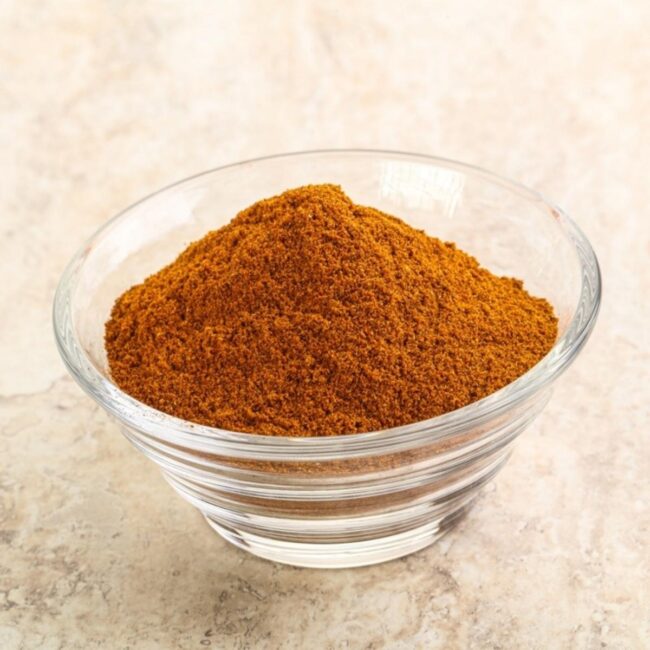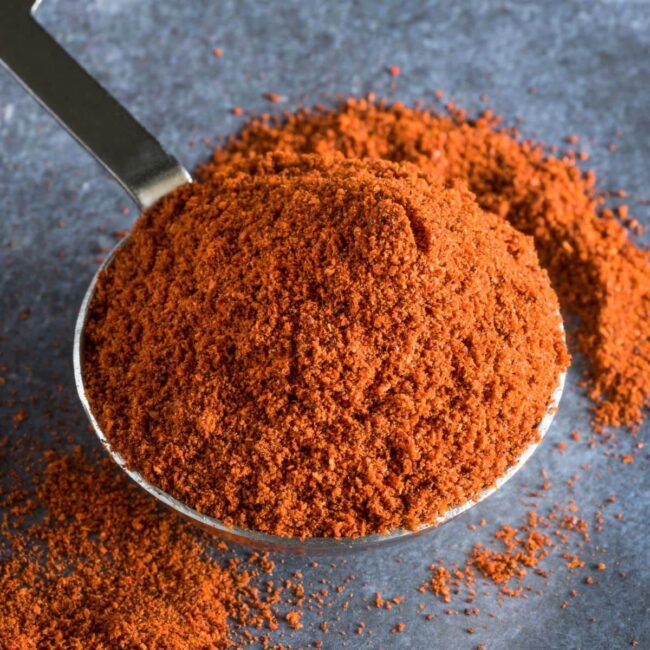4 Main Types of Alternatives to Gochugaru in Cooking
Gochugaru is known for its signature balance of smoky heat and subtle sweetness.
When it’s unavailable, alternative chili flakes or spice blends can provide a similar depth of flavor.
Some choices add extra smokiness, while others bring a milder heat.
The right swap keeps dishes vibrant without losing the essence of traditional Korean spice.
A well-matched alternative ensures that soups, kimchi, and stir-fries maintain their signature kick.
What Is Gochugaru?
Understanding Gochugaru reveals its vibrant red color and unique flavor.
This Korean chili powder, made from taeyang-cho chilies, offers a delightful mix of heat, smokiness, and subtle sweetness.
With a heat level ranging from 4,000 to 8,000 Scoville units (similar to jalapeños), it adds just the right amount of spiciness without overwhelming the palate.
Essential in traditional dishes like kimchi and various marinades, Gochugaru enhances meals with its smoky fruitiness.
Be mindful that this seasoning can stain surfaces due to its striking hue; careful handling is wise.
Armed with knowledge about Gochugaru's qualities opens doors for exciting culinary adventures ahead!
Alternatives to Gochugaru Spice
Gochugaru spice, a staple in Korean cuisine, adds depth and heat to many dishes. Various alternatives exist for those seeking different flavors or who may not have it on hand.
Hot and Spicy Replacements
Finding a suitable replacement for gochugaru can enhance your cooking.
Chili paste serves as an effective alternative, offering a thick texture with similar heat.
Start with the same amount as gochugaru and adjust to taste.
For those who enjoy smoky flavors, chipotle powder stands out; its dried jalapeño flavor complements many dishes well.
Using half the quantity initially allows for easy adjustments based on desired spiciness.
Red pepper flakes also make an excellent choice due to their colorful appearance and balanced heat level, allowing you to match them one-to-one with gochugaru at first before fine-tuning later on.
Milder Replacements
Several flavorful alternatives exist if gochugaru feels too spicy.
Ancho chile powder, made from dried poblano peppers, offers a rich and smoky taste with moderate heat.
Paprika serves as a great option too, known for its versatility and vibrant red color; it adds mild warmth without overwhelming dishes.
Smoked paprika enhances flavors uniquely with its subtle smokiness while Hungarian paprika provides various heat levels to suit individual tastes.
Aleppo pepper strikes the right balance with fruity notes and mild spice, making it an excellent choice for those who enjoy nuanced flavors.
Always start small when using these substitutes; adjusting them according to personal preference ensures the perfect flavor in your cooking adventures.
Replacements for Specific Dishes
Finding alternatives to gochugaru can help maintain the essence of traditional Korean dishes.
For bulgogi, a marinade may benefit from sweet and hot smoked Spanish paprika or a mix of ancho chili powder and cayenne pepper.
Both options provide heat while introducing distinct flavors that enhance your meal.
When preparing kimchi, red pepper flakes or Aleppo pepper serve as solid replacements, giving similar spice without straying far from the original taste.
In soups and stews, combining paprika with cayenne offers a mild sweetness balanced by spiciness; try using four parts paprika to one part cayenne for best results.
Other marinades can utilize red pepper flakes or chipotle powder; starting with half the amount allows for easy adjustments to suit your palate.
Others
Finding alternatives to gochugaru can enhance your Korean cooking experience when the original ingredient is unavailable.
Chipotle peppers create a smoky taste with moderate heat and come in dried, powdered, or canned forms.
Guajillo chiles offer a mild sweetness and fruity tang; grinding them into powder or blending soaked ones into paste works well for recipes.
Fish peppers bring a bright flavor profile with medium spiciness; grinding them into flakes adds an interesting twist to dishes.
Chile pasilla provides milder heat alongside earthy sweetness; using ground flakes can complement your meal beautifully.
Sandia chiles round out the options, offering their unique blend of fruitiness and spice when crushed or powdered for use in cooking.
How Gochugaru Is Used in Cooking
Versatile and flavorful, gochugaru enhances a wide range of dishes beyond traditional Korean cuisine.
This red chili pepper powder adds heat and depth to meals like pizza or sauces, transforming them into something special.
In the heart of Korean cooking, kimchi thrives with its spicy kick, made from vegetables such as Napa cabbage.
Gochugaru also shines in jjigae, a comforting stew that brings together seafood or meat with rich flavors.
Meat lovers appreciate its role in marinades for Korean BBQ where it mingles perfectly with soy sauce and garlic.
Bibimbap showcases this ingredient beautifully alongside colorful vegetables and rice while often paired with gochujang for an extra spice boost.
Why Replace Gochugaru?
Adjusting the heat level is one of the main reasons to seek alternatives, as some may find gochugaru too spicy or not spicy enough.
Several options allow you to fine-tune spice intensity while keeping flavors intact.
Flavor also plays a significant role; gochugaru has a sweet, smoky taste that might not appeal to everyone or fit every dish.
Trying out other ingredients opens up new flavor profiles and adds creativity to traditional recipes.
Texture is another important factor since gochugaru typically comes in coarse flakes, which may not work well in all dishes.
Using various substitutes lets you change this texture into something more suitable for your meal.
Gochugaru vs. Gochujang
Understanding the roles of gochugaru and gochujang is essential for anyone exploring Korean cuisine.
Gochujang stands out as a thick red pepper paste made from fermented soybeans, glutinous rice, and other ingredients like sugar and vinegar.
Its rich umami flavor adds depth to marinades, dips, and sauces while providing a sticky texture that enhances dishes beautifully.
Gochugaru offers a different experience as coarsely ground red pepper powder known for its vibrant color and mildly sweet smoky taste.
This dry spice is ideal for recipes where a sprinkle or mix into dry rubs is needed without overwhelming the dish's overall flavor profile.
Recognizing these differences enables confident choices in your cooking adventures with Korean flavors.
Things to Consider When Substituting Gochugaru
Selecting a suitable substitute for Gochugaru requires careful thought about its unique characteristics.
This spice shines with its moderate heat, appealing red color, and coarse texture.
The vibrant hue plays an important role in Korean dishes like kimchi and stews, making it essential to choose alternatives that maintain visual appeal; options like paprika or chili powder can work well here.
Flavor also matters greatly; Gochugaru offers a smoky taste that enhances many recipes.
For those looking for similar flavors, smoked paprika or chipotle powder might be good choices to consider as replacements.
Understanding these qualities will help ensure your dish remains flavorful and visually inviting while meeting everyone’s spice tolerance preferences.
Health Benefits of Gochugaru
Gochugaru serves as a valuable addition to your meals, enhancing both flavor and nutrition.
This spice comes from capsicum annuum and plays a vital role in Korean cooking, especially in dishes like kimchi and doenjang.
Rich in vitamins A and C, it supports healthy vision while boosting the immune system.
The vitamin C content aids collagen production and helps with iron absorption.
Notably, this ingredient promotes gut health by reducing inflammation that can lead to discomfort such as bloating or gas.
With its strong antioxidant properties, Gochugaru fights free radicals that may cause cellular damage, lowering the risk of chronic diseases like heart disease or cancer.




